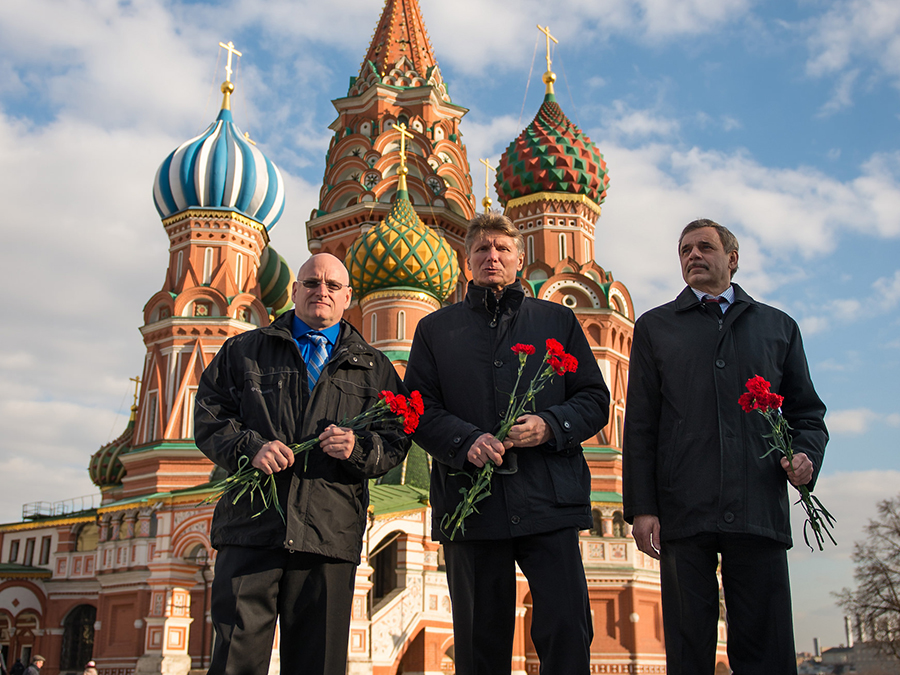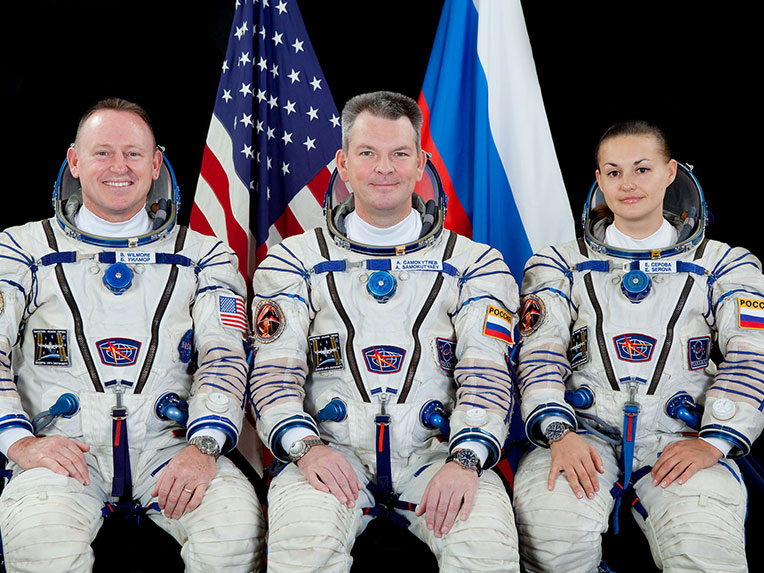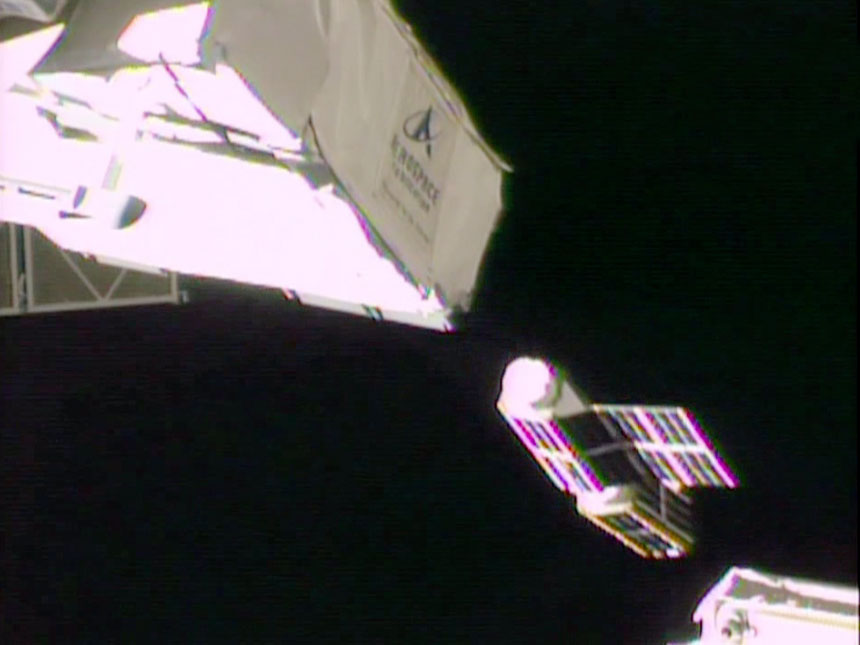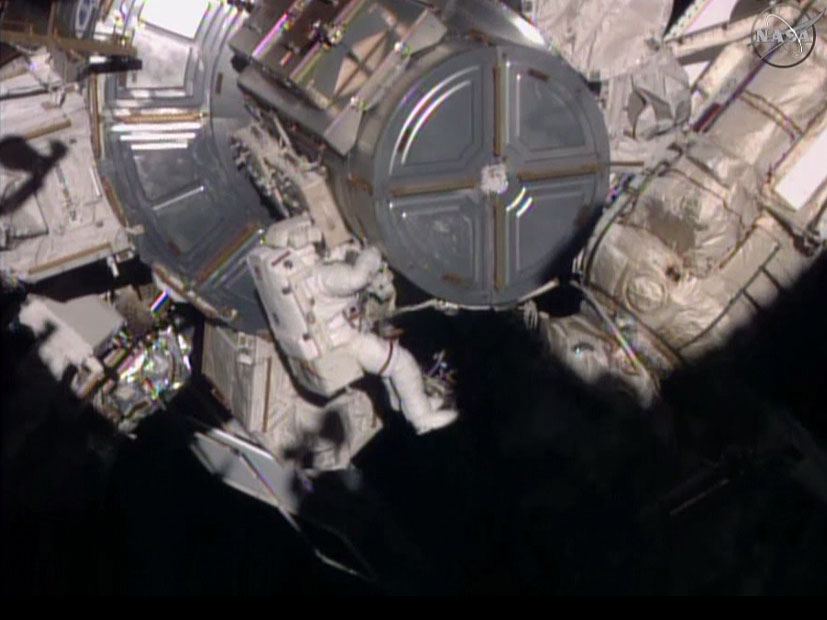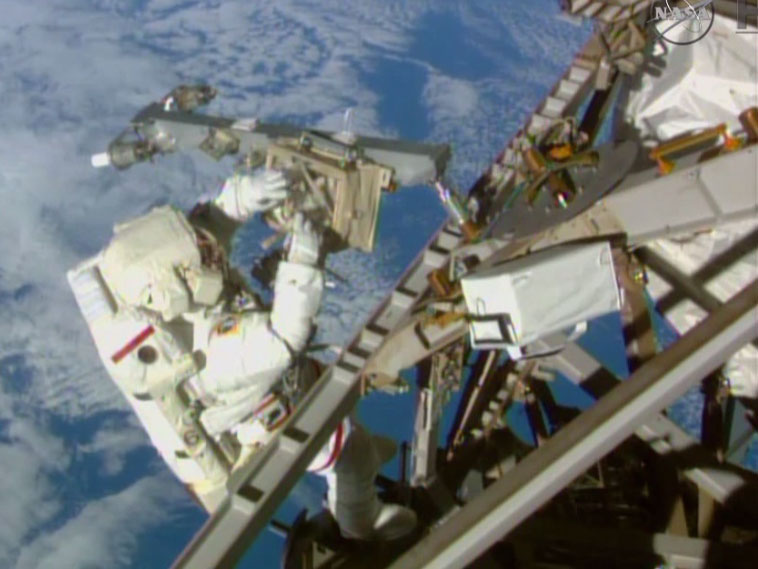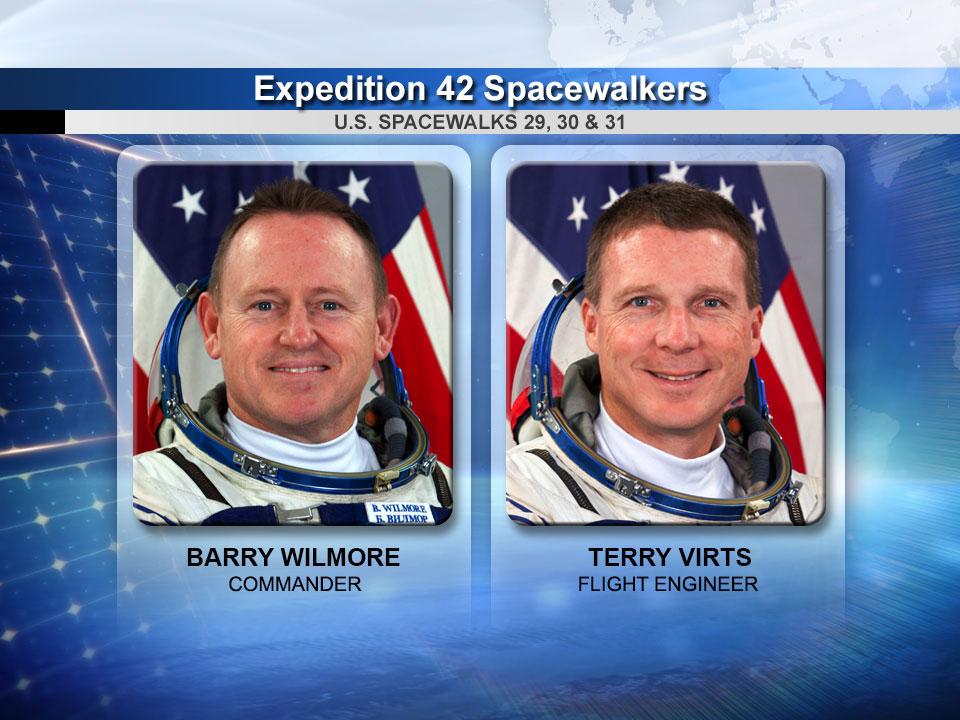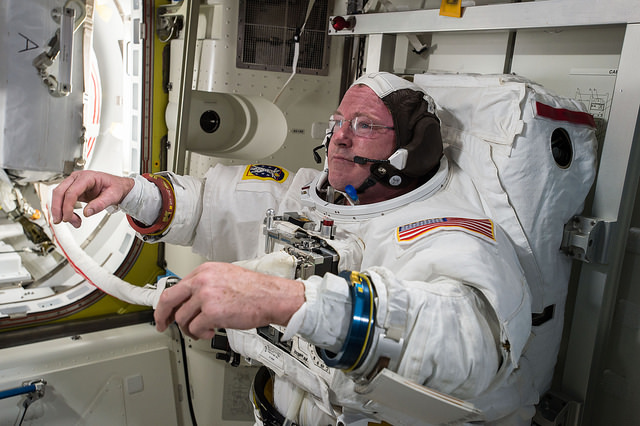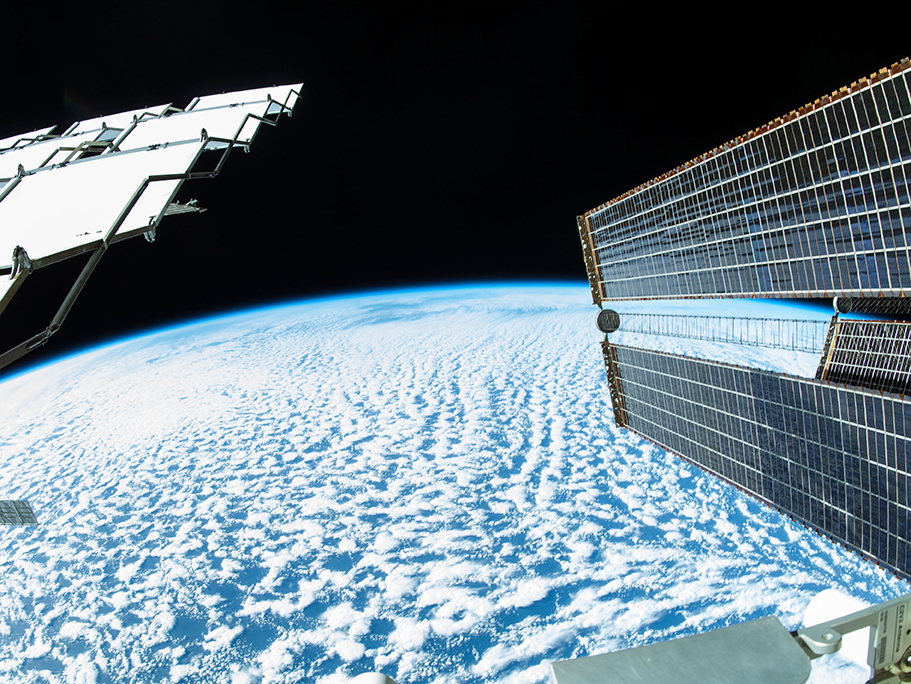
Expedition 42 crew members Barry Wilmore, Alexander Samokutyaev and Elena Serova are two days away from ending their stay aboard the International Space Station. The trio is packing gear and cleaning crew quarters as they prepare to undock in their Soyuz TMA-14M spacecraft Wednesday at 6:44 p.m. EDT and land in Kazakhstan at 10:07 p.m.
› Check out the live NASA TV coverage schedule of Expedition 42 undocking activities
Wilmore, the commander of Expedition 42, will handover control of the orbital laboratory Tuesday to NASA astronaut Terry Virts who will command Expedition 43. The Change of Command Ceremony will take place live on NASA TV at 10:25 a.m.
Meanwhile, advanced microgravity science and laboratory maintenance is ongoing aboard the space station. Among the experiments, the crew studied body size and shape in space for suit sizing and looked at airway inflammation in astronauts. Ethernet cables were also installed in the Harmony module that will enable future commercial crew vehicles to communicate with a pair of upcoming International Docking Adapters.
› Read more about the Body Measures experiment
› Read more about the Airway Monitoring study

